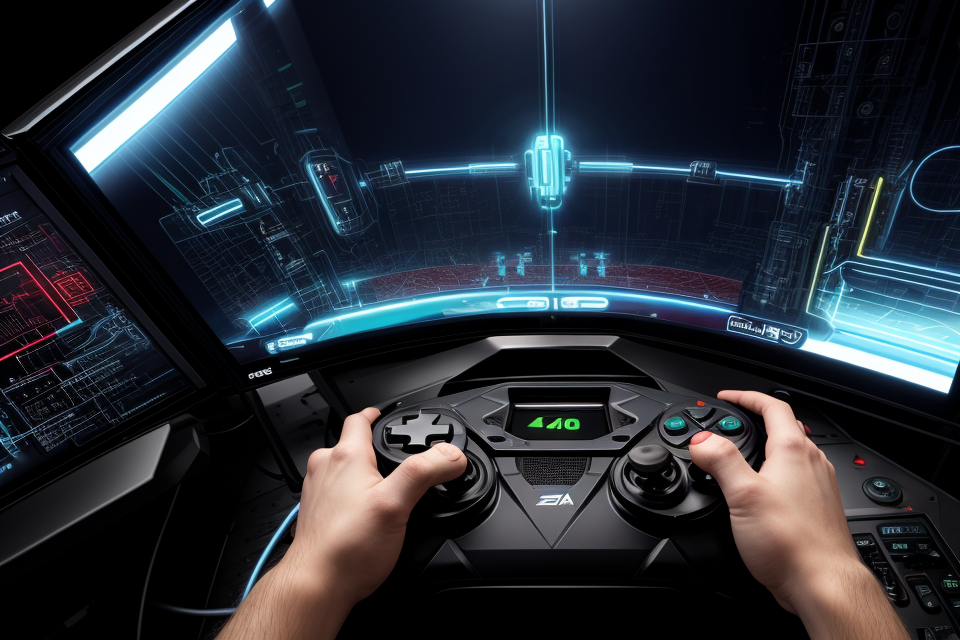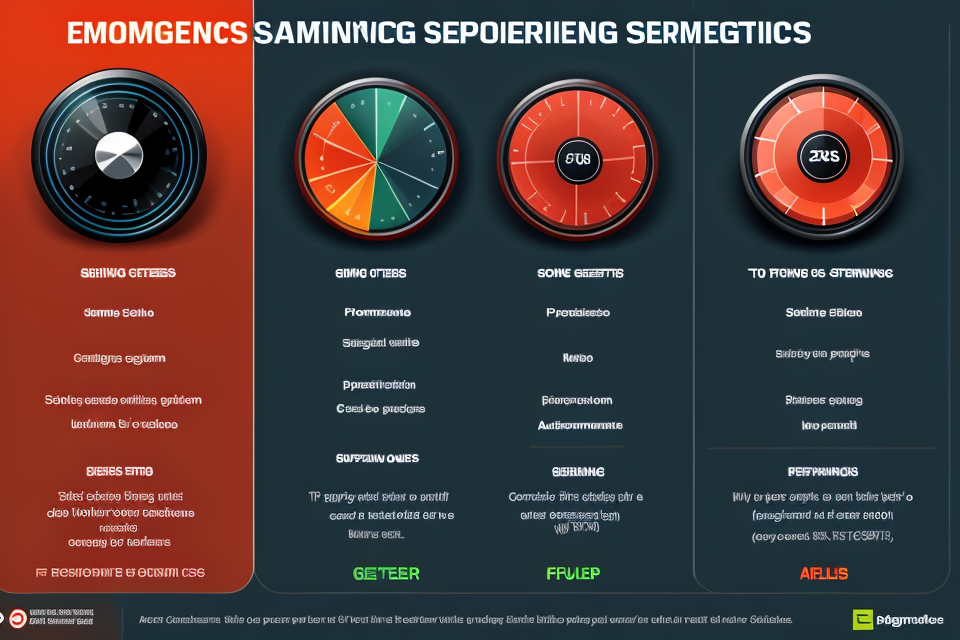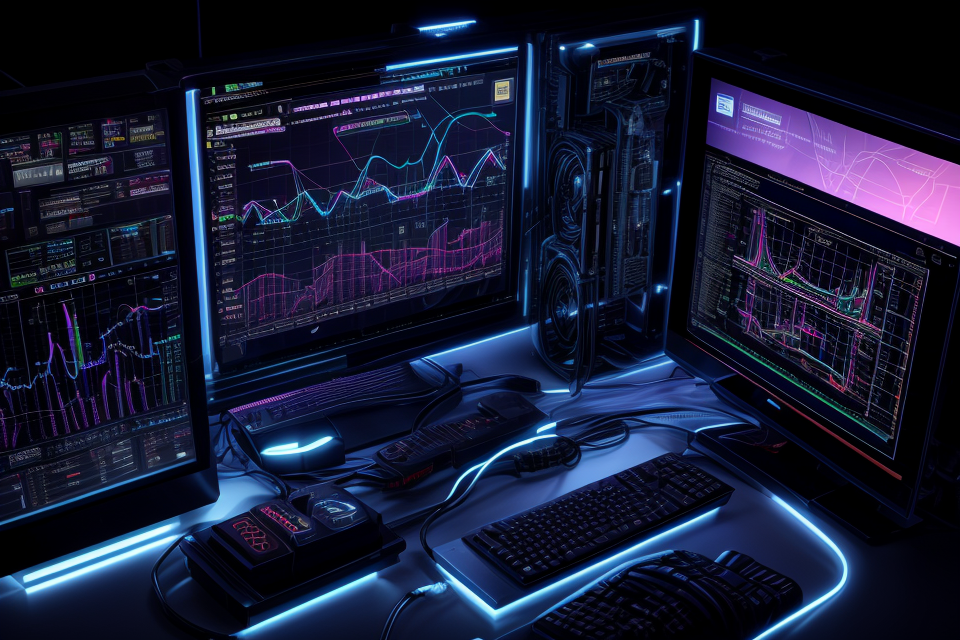
Are you a gamer who wants to experience smooth gameplay without any glitches or lags? Then you might be wondering what graphics settings you should use to achieve optimal performance. The right graphics settings can make a significant difference in your gaming experience. With the right settings, you can enjoy seamless gameplay, vivid visuals, and a lag-free experience. In this article, we will discuss the key graphics settings that you should adjust to optimize your gaming performance. From resolution to frame rate, we will cover it all. So, let’s dive in and explore the world of graphics settings and how they can enhance your gaming experience.
To achieve optimal performance in Call of Duty Modern Warfare 2019, it is important to adjust your graphics settings based on your computer’s hardware capabilities. The game offers various graphics options that can be customized to suit your computer’s performance.
If you have a high-end computer with a powerful graphics card, you can set the graphics settings to ultra or even 4K resolution. However, if you have a mid-range computer, it is recommended to set the graphics settings to high or medium, depending on your computer’s capabilities.
Some of the graphics options that you can adjust include texture quality, shadow quality, anti-aliasing, and resolution. You can also adjust the frame rate limit to ensure that the game runs smoothly.
It is important to note that graphics settings directly affect the game’s performance, and lowering the graphics settings can improve the game’s performance significantly. However, lowering the graphics settings too much can affect the overall gaming experience. Therefore, it is essential to find the right balance between graphics quality and performance.
Understanding Graphics Settings
Graphics Basics
Graphics settings refer to the various options and configurations that can be adjusted in a video game or application to affect the visual quality and performance of the graphics. These settings can include things like resolution, frame rate, texture quality, and more.
The importance of graphics settings lies in their ability to impact the overall performance of a game or application. By adjusting these settings, users can optimize their experience to balance visual quality with the smoothness of gameplay or performance. For example, lowering the resolution or texture quality can improve frame rates and reduce lag, while increasing these settings can lead to more detailed and visually stunning graphics.
Understanding the basics of graphics settings is crucial for making informed decisions about how to optimize performance. By familiarizing oneself with the various options and their effects, users can customize their experience to suit their needs and preferences.
Common Graphics Settings
Graphics settings are a crucial aspect of video games that can significantly impact the overall gaming experience. There are several common graphics settings that players can adjust to optimize their game’s performance. Here are some of the most common graphics settings:
Frame rate
Frame rate refers to the number of frames displayed per second in a game. A higher frame rate results in smoother and more fluid gameplay. Most games have a default frame rate setting of 60 frames per second (FPS), but some games allow players to adjust this setting to achieve better performance.
Resolution
Resolution refers to the number of pixels displayed on the screen. A higher resolution results in sharper and more detailed graphics. However, increasing the resolution can also result in a significant drop in performance, especially on older or less powerful computers.
Texture quality
Texture quality refers to the level of detail in the game’s textures, such as the surfaces of buildings, rocks, and characters. Higher texture quality results in more realistic and detailed graphics, but it can also impact performance.
Shadow quality
Shadow quality refers to the level of detail in the game’s shadows. Higher shadow quality results in more realistic and detailed shadows, but it can also impact performance.
Anti-aliasing
Anti-aliasing is a technique used to smooth out jagged edges in the game’s graphics. There are several types of anti-aliasing, including MSAA (Multi-Sample Anti-Aliasing) and SSAO (Screen Space Ambient Occlusion). Anti-aliasing can improve the overall visual quality of the game, but it can also impact performance.
In summary, these are some of the most common graphics settings that players can adjust to optimize their game’s performance. By understanding the impact of each setting, players can make informed decisions to achieve the best possible gaming experience.
Optimizing Graphics Settings for Performance
Identifying Optimal Settings
Identifying optimal graphics settings for optimal performance can be a complex process that requires careful evaluation and testing. There are several methods that can be used to identify the best settings for a particular game or application.
One method is benchmarking, which involves running a series of tests to determine the performance of the system at different graphics settings. This can help identify the sweet spot where the system is able to achieve the best balance between performance and image quality.
Another method is balancing performance and image quality. This involves adjusting the graphics settings to find the point where the system is able to achieve the best balance between the two. This may require some trial and error, but it can ultimately lead to the best results.
In addition to these methods, it’s also important to consider the specific hardware of the system being used. Different hardware configurations may require different graphics settings in order to achieve optimal performance. Therefore, it’s important to carefully evaluate the hardware and adjust the graphics settings accordingly.
Overall, identifying optimal graphics settings for optimal performance requires careful evaluation and testing. By using methods such as benchmarking and balancing performance and image quality, and taking into account the specific hardware of the system being used, it’s possible to find the best settings for a particular game or application.
Tips for Optimizing Graphics Settings
Adjusting the graphics settings in your video games can greatly impact your gaming experience, particularly in terms of performance. By making a few simple tweaks to your settings, you can optimize your game’s performance and enjoy a smoother, more responsive experience. Here are some tips for optimizing your graphics settings:
Lowering resolution
One of the simplest ways to improve performance is to lower the resolution of your game. This will reduce the number of pixels that need to be rendered on your screen, which can lead to a significant improvement in frame rate. You can lower the resolution of your game by selecting a lower resolution option in the graphics settings menu. However, keep in mind that lowering the resolution too much can result in a blurry, low-quality image.
Reducing texture quality
Textures are the 3D models that make up the objects in your game world. They can have a significant impact on your game’s performance, particularly if you have a lower-end graphics card. By reducing the texture quality, you can reduce the amount of processing power required to render your game world. This can be done by selecting a lower texture quality option in the graphics settings menu.
Adjusting shadow quality
Shadows are an important part of any game’s visuals, but they can also have a significant impact on performance. By adjusting the shadow quality, you can reduce the amount of processing power required to render shadows in your game. You can do this by selecting a lower shadow quality option in the graphics settings menu. Keep in mind that lowering shadow quality too much can result in a loss of realism.
Disabling anti-aliasing
Anti-aliasing is a technique used to smooth out the edges of objects in your game world. While it can improve the visual quality of your game, it can also have a significant impact on performance. By disabling anti-aliasing, you can reduce the amount of processing power required to render your game world. This can be done by selecting the “off” option for anti-aliasing in the graphics settings menu.
Overclocking GPU
If you have a high-end graphics card, you may be able to overclock it to improve performance. Overclocking involves increasing the clock speed of your graphics card, which can lead to higher frame rates and smoother performance. However, keep in mind that overclocking can be risky and can potentially damage your graphics card if done improperly. It’s important to do your research and make sure you’re overclocking your graphics card safely.
Factors Affecting Graphics Performance
Hardware Components
When it comes to achieving optimal graphics performance, the hardware components of your computer play a crucial role. The following are the key hardware components that affect graphics performance:
Graphics Processing Unit (GPU)
The GPU is responsible for rendering images and animations on your computer screen. It is designed to handle complex mathematical calculations quickly and efficiently. A powerful GPU can significantly improve your computer’s graphics performance, especially when playing video games or using graphics-intensive applications. Some of the factors that can affect the performance of your GPU include:
- Clock speed: The clock speed of your GPU determines how many calculations it can perform per second. A higher clock speed means better performance.
- Number of cores: The number of cores on your GPU can also affect its performance. More cores mean that the GPU can perform more calculations simultaneously, resulting in better performance.
- Memory: The amount of memory on your GPU can also impact its performance. More memory means that the GPU can handle more complex graphics and animations.
Random Access Memory (RAM)
RAM is a type of memory that is used to temporarily store data that your computer is currently using. It is essential for ensuring that your computer can run smoothly and efficiently. When it comes to graphics performance, the amount of RAM in your computer can have a significant impact. A higher amount of RAM means that your computer can handle more complex graphics and animations without slowing down.
Central Processing Unit (CPU)
The CPU is the brain of your computer, responsible for executing instructions and performing calculations. It is essential for ensuring that your computer can run smoothly and efficiently. When it comes to graphics performance, the CPU can also play a significant role. A powerful CPU can help your computer render images and animations more quickly and efficiently, resulting in better performance. Some of the factors that can affect the performance of your CPU include:
- Clock speed: The clock speed of your CPU determines how many calculations it can perform per second. A higher clock speed means better performance.
- Number of cores: The number of cores on your CPU can also affect its performance. More cores mean that the CPU can perform more calculations simultaneously, resulting in better performance.
- Architecture: The architecture of your CPU can also impact its performance. Some CPU architectures are better suited for handling complex graphics and animations than others.
Game Characteristics
When it comes to determining the optimal graphics settings for a game, it’s important to consider the specific characteristics of the game in question. These characteristics can have a significant impact on the performance of the game, and therefore on the graphics settings that should be used. Here are some key game characteristics to keep in mind:
- Engine complexity: The complexity of the game engine can have a significant impact on the performance of the game. A more complex engine will require more powerful hardware to run smoothly, and may therefore require lower graphics settings in order to maintain a consistent frame rate.
- Number of enemies: The number of enemies in a game can also affect performance. A game with a large number of enemies on screen at once will require more processing power, and may therefore require lower graphics settings in order to maintain a smooth frame rate.
- Environment size: The size of the game environment can also impact performance. A game with a large, open world will require more processing power than a game with a smaller, more focused environment. This means that players may need to adjust their graphics settings in order to maintain a smooth frame rate when playing a game with a large environment.
System Configuration
Driver updates:
- Updating your graphics driver is essential to ensure optimal performance.
- Regularly checking for and installing the latest graphics driver updates can significantly improve performance.
- It is recommended to only download drivers from the manufacturer’s website to avoid any potential issues with third-party drivers.
Windows settings:
- The Windows settings can also affect graphics performance.
- The “Performance” option in the “System” settings can help optimize graphics performance by adjusting various settings such as visual effects and power management.
- The “Advanced system settings” option can also be used to further optimize graphics performance by adjusting settings such as screen resolution and color quality.
Power management:
- Power management settings in Windows can also impact graphics performance.
- The “High-performance” power plan is recommended for gaming and other graphics-intensive applications.
- Lowering the power limit and increasing the boost frequency can also help improve graphics performance.
Balancing Performance and Image Quality
Choosing the Right Settings
When it comes to choosing the right graphics settings for optimal performance, it’s important to prioritize frame rate over image quality. While a higher image quality may look more visually appealing, it can also significantly decrease your frame rate, resulting in a less smooth gaming experience.
Here are some tips for choosing the right graphics settings:
- Lower the resolution: Lowering the resolution can significantly improve your frame rate without sacrificing too much image quality. You can also try lowering the resolution in specific games or programs that are particularly demanding.
- Turn off antialiasing: Antialiasing can improve the appearance of text and images on your screen, but it can also impact your frame rate. If you don’t notice a significant difference in image quality, consider turning off antialiasing to improve your performance.
- Adjust texture quality: Texture quality can have a big impact on your frame rate, especially in games with complex environments. Consider lowering the texture quality to improve your performance without sacrificing too much visual fidelity.
- Reduce particle effects: Particle effects, such as smoke and explosions, can be very demanding on your graphics card. Consider reducing the number of particles or lowering their quality to improve your frame rate.
- Use medium or low settings: While you may want to use the highest graphics settings to get the best image quality, this can also significantly impact your frame rate. Consider using medium or low settings instead to find a balance between image quality and performance.
Overall, the key to choosing the right graphics settings is to find a balance between image quality and performance that works for you. While it can be tempting to crank up the graphics settings for a more visually impressive experience, it’s important to remember that a smoother frame rate can make a big difference in your overall gaming experience.
Adapting to Different Scenarios
When it comes to choosing the right graphics settings for optimal performance, it’s important to consider the specific scenario in which you’ll be playing the game. Here are some factors to keep in mind:
- Low-end vs. high-end systems: If you’re playing on a low-end system, you’ll need to adjust your graphics settings to avoid choppy gameplay or slow frame rates. This might mean reducing the resolution, turning off anti-aliasing, or lowering the texture quality. On the other hand, if you’re playing on a high-end system, you may be able to crank up the graphics settings to enhance the visual experience.
- Indoor vs. outdoor environments: The type of environment you’re playing in can also impact your graphics settings. For example, indoor environments with less lighting and fewer moving objects may allow for higher graphics settings than outdoor environments with bright sunlight and complex landscapes. In general, it’s a good idea to experiment with different settings to find the optimal balance between performance and image quality for each specific scenario.
Evaluating Results
Monitoring frame rate is an essential aspect of evaluating the results of your graphics settings. A higher frame rate generally means smoother gameplay, which can lead to a better gaming experience. To monitor frame rate, you can use built-in tools in most games or third-party applications that display real-time frame rates.
Another critical aspect of evaluating results is adjusting settings as needed. If you find that your frame rate is too low, you may need to lower some of your graphics settings to achieve a more optimal balance between performance and image quality. Conversely, if you find that your frame rate is too high, you may need to increase your graphics settings to achieve a more visually appealing experience.
It’s essential to strike the right balance between performance and image quality based on your hardware capabilities and personal preferences. Some gamers may prioritize higher frame rates and lower graphics settings, while others may prefer higher graphics settings and lower frame rates. Ultimately, the key to finding the optimal balance is to experiment with different settings and evaluate the results to find the configuration that works best for you.
FAQs
1. What are graphics settings and why are they important?
Graphics settings refer to the various options and configurations that can be adjusted in a video game to optimize the visual experience. These settings can include things like resolution, texture quality, shadow quality, and more. Adjusting these settings can have a significant impact on the overall performance of the game, including frame rate and overall stability.
2. What are some key graphics settings that I should adjust for optimal performance?
There are several key graphics settings that can have a significant impact on performance. These include:
* Resolution: Setting the resolution to a lower value can help improve performance, but this can also result in a lower quality visual experience.
* Texture quality: Higher texture quality can result in more detailed and realistic graphics, but this can also have a negative impact on performance.
* Shadow quality: Shadows can significantly impact the overall visual experience, but higher shadow quality can also have a negative impact on performance.
* Anti-aliasing: Anti-aliasing can help improve the overall visual quality of the game, but it can also have a negative impact on performance.
* VSync: VSync can help prevent screen tearing, but it can also have a negative impact on performance.
3. How do I find the optimal graphics settings for my specific system?
The optimal graphics settings for your specific system will depend on a variety of factors, including the specific hardware you are using and the performance you are trying to achieve. One way to find the optimal settings is to use the built-in benchmarking tool in the game, which can provide you with detailed information about the performance of the game at different graphics settings. You can also try adjusting different settings and observing the impact on performance to find the optimal settings for your specific system.
4. Can I improve performance by adjusting graphics settings in addition to other performance optimizations?
Adjusting graphics settings can certainly help improve performance, but it is not the only factor to consider when trying to optimize the performance of a game. Other factors, such as reducing the number of active processes or disabling unnecessary services, can also have a significant impact on performance. It is important to consider all of these factors when trying to optimize the performance of a game.


